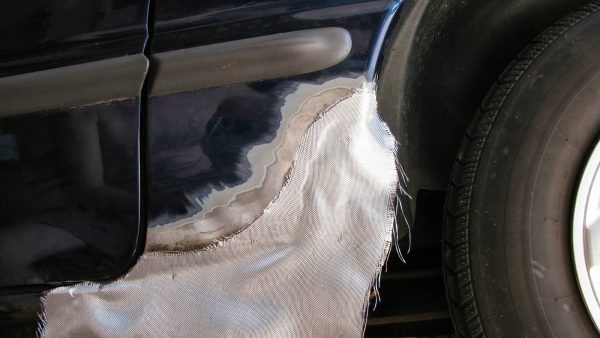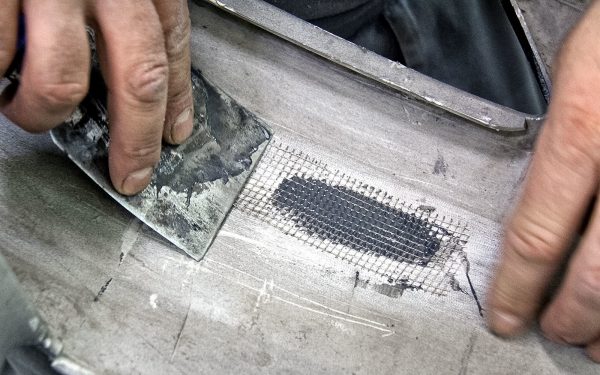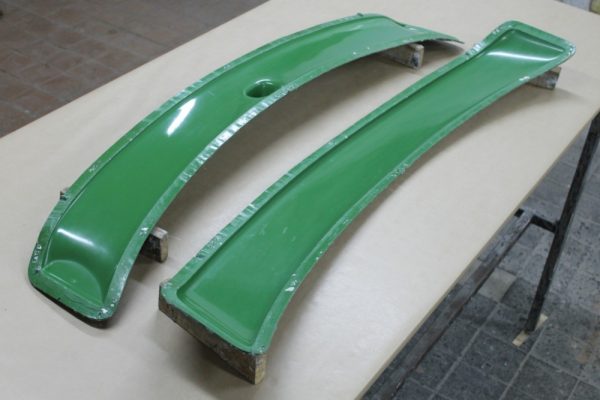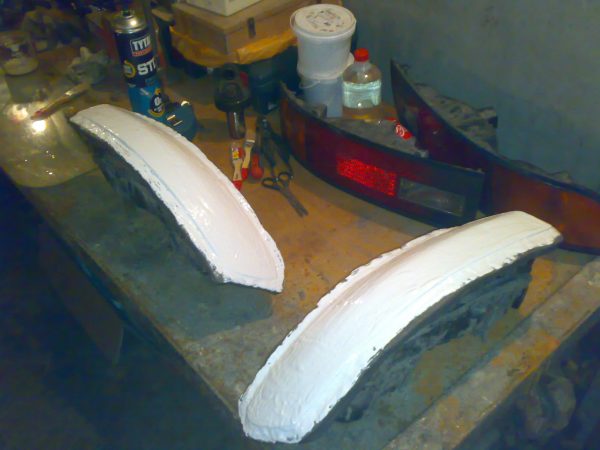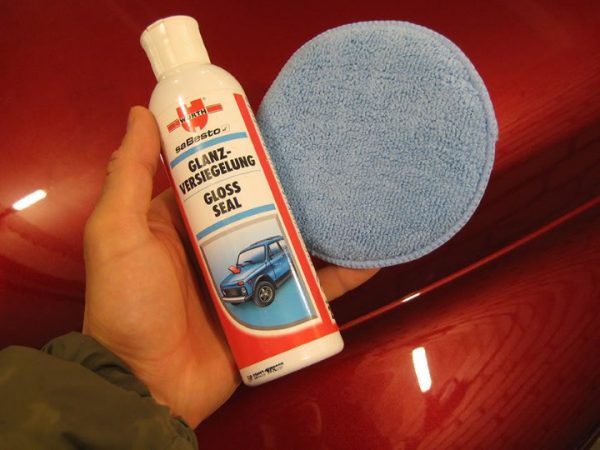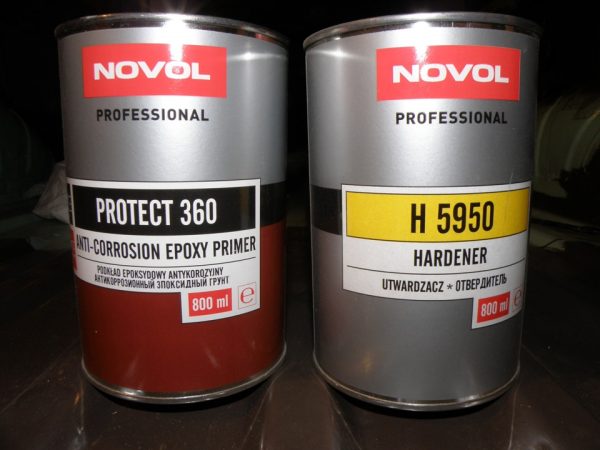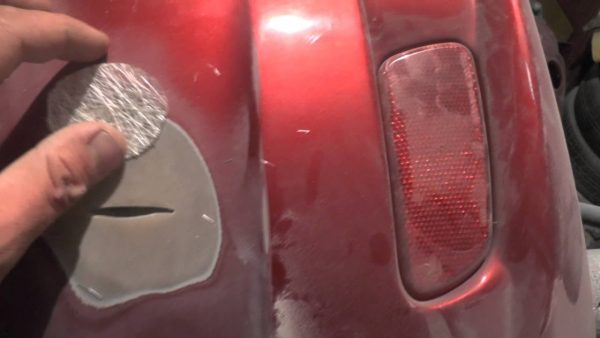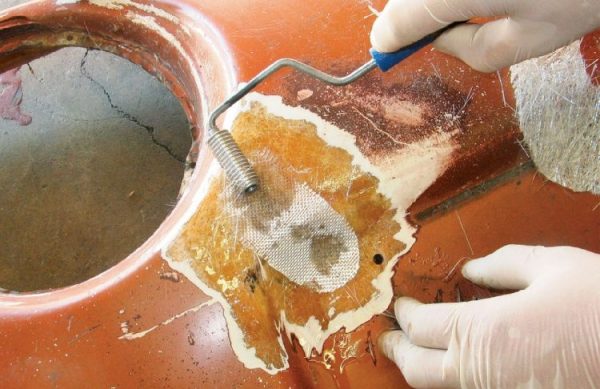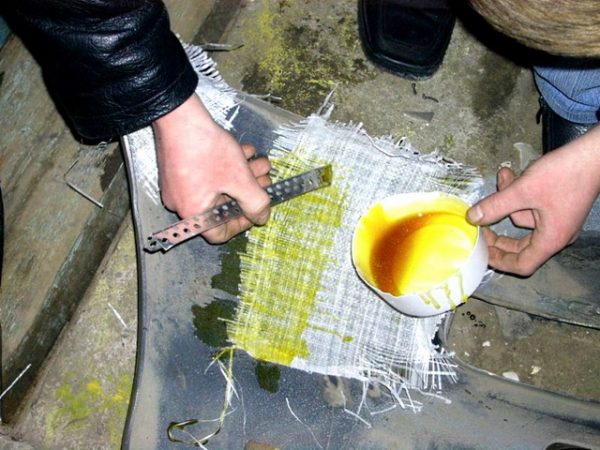Modern composite materials are widely used in auto repair. For example, there is a so-called fiberglass, which allows to strengthen parts experiencing heavy loads, and is also ideally suited for combination with other materials. Epoxy resin for a car is just the tool that complements the fiberglass base, impregnates it and helps to restore important elements and components.
- Fiberglass and Epoxy
- Fiberglass production technology
- Fiberglass benefits
- Fiberglass Matrix Features
- Subtleties of working with chemical compounds
- Epoxy protective polish
- Epoxy Anticorrosive
- Methods of manufacturing fiberglass parts
- Epoxy Repair Technology
- Preparatory work
- Install fiberglass linings
- Safety precautions
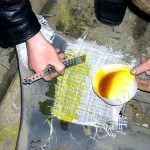
Fiberglass and Epoxy
Fiberglass or fiberglass is a unique multicomponent material. It is not monolithic, but consists of many fibers. Fiberglass is very tough, durable, while lightweight and flexible. In the automotive industry, fiberglass is no less often used - a combination of fiberglass and epoxy. This material does not burden the machine system and significantly surpasses the properties of metal and ordinary plastic.
The metal is susceptible to corrosion and has a significant mass, the plastic is not reliable enough, so many body parts are now made only from fiberglass. Epoxy and fiberglass will be indispensable in the repair of gas tanks, hood, car wings and other parts.
to contents ↑Fiberglass production technology
Epoxy based fiberglass is single or dual phase. According to one-stage production, a glass mass is taken, glass fibers are drawn from it. There is also a second technology, which involves the formation of glass balls with the subsequent production of fibers and the parallel introduction of epoxy into the composition. The second technology is more complex, but allows to obtain material with higher quality characteristics.
to contents ↑Fiberglass benefits
The advantages of this material in automobilethe repair is certain. In addition to lightness and incredible strength, there are other advantages:
- moisture resistance;
- low thermal conductivity;
- ease of working with him;
- resistance to the influence of aggressive factors and atmospheric effects;
- reasonable price for auto repair;
- long service life of the repaired part;
- high installation speed.
Fiberglass Matrix Features
To obtain fiberglass products, they combine fiberglass with epoxy resin, after which the mass freezes in the form that the user needs. In factory conditions, bumpers, other body parts, parts of subwoofers do this, as well as cast various forms for cars.
You can also make a matrix yourself.This will require such materials and tools:
- polystyrene (polystyrene foam) with a smooth surface;
- resin brushes;
- tweezers with long "legs";
- small rubber roller;
- scissors, clerical knife;
- epoxy;
- fixer with dispenser;
- fiberglass;
- thin glass veil;
- gelcoat.
A model of the part with which the matrix will be made is made of foam. The smoothness of the foam should be sufficient, otherwise the finished matrix will be difficult to extract from the layout. But before pouring it is better to apply a special wax on the walls of the layout, which will surely prevent this problem. If the part is complex, has bends, nodes, it is better to make the form detachable, with partitions.
To create a fiberglass matrix, the following actions are taken:
- To preserve the ideal shape matrix, the base is covered with a thin glass veil, which will not allow thicker fibers to protrude outward.
- The resulting air bubbles are removed so that the veil fits as closely as possible to the layout. To do this, use a knife to cut bubbles, tweezers to level the surface.
- They lay fiberglass with a density of 600 g / sq. m, apply a layer of epoxy resin, previously diluting it with a hardener. Remove air again.
- Wait for the matrix to completely dry. After puttying, polishing it with fine sandpaper, then polishing.
- Apply gelcoat to protect the matrix, the final alignment of the surface. Instead of this material, a special finishing putty can be used.
- The matrix is lubricated with paraffin, parquet polish, so that the manufactured part can be easily removed.
to contents ↑If epoxy is not available, you can take the polyester resin. The result will also be excellent, although the strength of such fiberglass is considered somewhat lower. Since the work does not require the availability of expensive materials, tools, auto repair and prepare parts really independently in any garage. The final strength will be so high that only a grinder can cut a part.
Subtleties of working with chemical compounds
There are a number of epoxy-based polishes and mastics that can be used to protect the finished paintwork. The most popular are described below.
Epoxy protective polish
Such polishes are produced by many brands - Wurth, Cilajet and others. Manufacturers position the funds so that they are able to protect the final coatings for 1.5 years or more. Users note a shorter protection period - 6-12 months, and sometimes less. This period can be reduced even if the technology for applying epoxy is violated.
The most important points that should not be violated:
- do polishing drying during the day, at least;
- the temperature during drying should be + 15 ... + 25 degrees;
- sunlight is excluded;
- the surface should be flat, without scratches;
- without preliminary abrasive treatment, they only apply polishes to car bodies under the age of one year;
- the base is well degreased or wiped with silicone removers.
The result of a violation of technology will not be noticeable immediately, but later, when the coating begins to deteriorate ahead of time. On the contrary, subject to the methodology, it will last quite a long time. Epoxy polishes are applied with the included wipes. It is convenient for them to grind the product, getting an even layer, and this must be done quickly - in 5-15 minutes (as indicated by the manufacturer). This is due to the short time before epoxy polymerization, which will still be reduced at high ambient temperatures.
to contents ↑Epoxy Anticorrosive
Anticorrosive is understood to mean more durable, durable epoxy compounds than regular polishes with the same resin.More often, with the addition of wax and bitumen, the bottom of the machine is treated, while rubber in the form of granules is introduced into the compositions for wheel arches. Steel is polished with anticorrosive with zinc paste or aluminum powder, which will reliably protect them from corrosion.
Does it make sense to use such tools? Only if they have high frost resistance. With standard resistance to temperature extremes, anticorrosive components begin to lose elasticity and delaminate, so problems can occur after winter operation of the machine.
to contents ↑Methods of manufacturing fiberglass parts
The method of gluing fiberglass to the layout is the most famous. But there are other technologies for creating parts based on fiberglass. Here are the main ones:
- melting;
- winding;
- spraying.
The melting method involves the melting of resin-saturated preforms with a matrix. They are placed in the chamber, warmed up, then they solidify in the form of a layout. The spraying method involves the introduction of glass fibers into a liquid epoxy and spraying onto the walls of the mold. It is light, fast, but the layer may turn out to be too thick, besides not as strong as when using fiberglass.
The winding technique is used to create a round part - a cylinder, frame, tube. The glass fiber is wetted with epoxy resin, squeezed, wound on a breadboard. The finished part will be very durable. These methods are used for the manufacture of many products for cars - different linings, covers. In the same way, the car is tuned with glass fibers, and solid bumpers are made of this material. Fiberglass and epoxy based fiberglass patches can be used to glue the radiator, remove holes and potholes, cracks and chips.
to contents ↑
Epoxy Repair Technology
Fiberglass is needed to strengthen the damaged area of the body or internal components of the car. If necessary, substances that provide even greater reliability of the connection can be added to the epoxy - aluminum or steel (in the form of a powder), talc, sawdust. Also on sale there are plasticizers (oils and others) that are introduced into the epoxy to improve its properties. The plasticizer helps the resin not to undergo peeling and cracking for a long time, therefore it is desirable for use.
to contents ↑Preparatory work
To prepare the product cleaned from any surface and deep contamination. They remove paint, corrosion, dirt by wiping with solutions, washing, grinding. Around the place of damage you need to treat the surface by 6 cm, no less. If you slightly precipitate the repair area inside, the overlay will almost not stand out against the main background. Before work, the area is degreased. If necessary, apply polish, anticorrosive or galvanize. Then make a primer.
to contents ↑In the form of a defect, pads are made of glass material. They need 3-4 pieces, which depends on the thickness of the fiberglass. The first should be 2 cm larger at the edges than the defect, the latter should be 6 cm larger, the intermediate should be 3-4 cm larger.
Install fiberglass linings
First, a layer of hardened epoxy is applied to the treated base. Further, the procedure will be as follows:
- apply the smallest piece of fiberglass, roll it with a roller to remove air;
- if air nevertheless penetrated under the material, the latter is carefully pierced;
- apply another layer of resin, layering the next piece of medium size;
- if necessary, perform another intermediate layer or apply the largest "patch", alternately wetting with epoxy.
Fiberglass pieces can be immediately impregnated with resin and applied in place. The main thing is that each next layer a few millimeters overlap the previous one. After the resin hardens completely, a file passes through the surface, then it is sanded. The remaining holes can be covered with auto putty. First, they put a solid patch on the holes of a large size - from metal, plywood. This will help eliminate fiberglass damage. Preliminarily, the material is lubricated with wax or paraffin so that it can be removed at the end of work.
to contents ↑Safety precautions
Do not allow epoxy to get on the skin, eyes, which can cause allergies or toxic damage, inflammation. To do this, put on gloves, glasses. You need to work in a respirator, because small particles of fiberglass are also harmful to the respiratory system, as well as the evaporation of the resin. Indoors, it is important to install a good exhaust hood or carefully ventilate it through the window. If tar gets on the skin, it is washed well with soap and a nourishing cream is applied. Compliance with such measures will help to do the job efficiently and safely.

